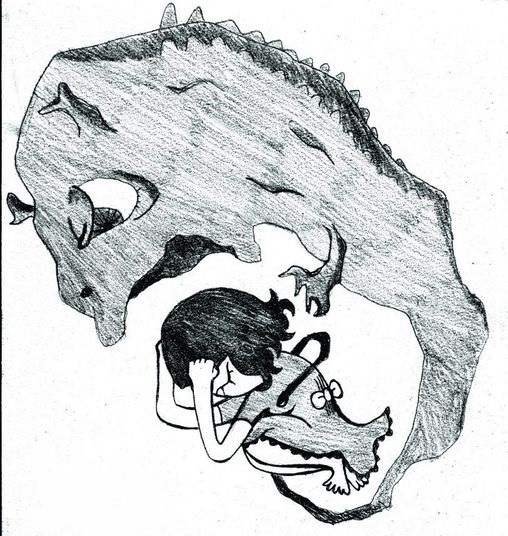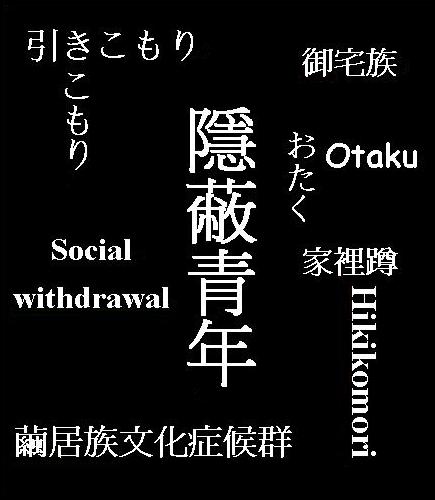Posttraumatic Stress Disorder
Posttraumatic Stress Disorder (PTSD) comes from the psychological disorder that initiated by the encounters of distress, horrible incidents, or injury. It may develop after a person is exposed to one or more traumatic events, such as sexual assault, warfare, serious injury, or threats of imminent death. The Diagnostic and Statistical Manual of Mental Disorders IV (DSM IV) shows the criteria of Posttraumatic Stress Disorder which could avoid to misleading or misdiagnosis.
A. The person has been exposed to a traumatic event in which both of the following were present: (1) the person experienced, witnessed, or was confronted with an event or events that involved actual or threatened death or serious injury, or a threat to the physical integrity of self or others (2) the person's response involved intense fear, helplessness, or horror. Note: In children, this may be expressed instead by disorganized or agitated behavior B. The traumatic event is persistently reexperienced in one (or more) of the following ways: (1) recurrent and intrusive distressing recollections of the event, including images, thoughts, or perceptions. Note: In young children, repetitive play may occur in which themes or aspects of the trauma are expressed. (2) recurrent distressing dreams of the event. Note: In children, there may be frightening dreams without recognizable content. (3) acting or feeling as if the traumatic event were recurring (includes a sense of reliving the experience, illusions, hallucinations, and dissociative flashback episodes, including those that occur on awakening or when intoxicated). Note: In young children, trauma-specific reenactment may occur. (4) intense psychological distress at exposure to internal or external cues that symbolize or resemble an aspect of the traumatic event (5) physiological reactivity on exposure to internal or external cues that symbolize or resemble an aspect of the traumatic event C. Persistent avoidance of stimuli associated with the trauma and numbing of general responsiveness (not present before the trauma), as indicated by three (or more) of the following: (1) efforts to avoid thoughts, feelings, or conversations associated with the trauma (2) efforts to avoid activities, places, or people that arouse recollections of the trauma (3) inability to recall an important aspect of the trauma (4) markedly diminished interest or participation in significant activities (5) feeling of detachment or estrangement from others (6) restricted range of affect (e.g., unable to have loving feelings) (7) sense of a foreshortened future (e.g., does not expect to have a career, marriage, children, or a normal life span)
D. Persistent symptoms of increased arousal (not present before the trauma), as indicated by two (or more) of the following: (1) difficulty falling or staying asleep (2)irritability or outbursts of anger (3) difficulty concentrating (4) Hypervigliance (5) exaggerated startle response E. Duration of the disturbance (symptoms in Criteria B, C, and D) is more than 1 month. F. The disturbance causes clinically significant distress or impairment in social, occupational, or other important areas of functioning. If duration of symptoms is less than 3 months, it is Acute; and if duration of symptoms is 3 months or more, it is Chronic. Most people have been misled to have PTSD that they have any two or three recurrent symptoms. Actually, there is, at least one week after the event, an incubation period; some cases lasted for 6 months. Regarding to this problem, please check in the specialized organizations, or enquire the professions. In Europeans and other countries, there are many natural or man-made disasters, such as earthquakes, tsunami, war…etc. Related to the individuals, such as violence abuse, rape, serious accidents, or witnessed the horrible incidents. One of the best examples of Hong Kong is “LanKwaiFong incident 1993”. In U.S.A., “911” was the shocked event of the world. These incidents will arouse various levels of PTSD. If it treated inappropriately, the more and more unpredictable problems or disorders will be induced, such as social withdraw, Obsessive and Compulsive Disorder, General anxiety Disorder and whatnot.
There are huge of therapeutic plan for all psychological disorder. America and Europe have developed a series of therapeutic method to confront with PTSD, but it is not the ultimate. From different angles, PTSD could be cured. Cognitive Behavioural Therapy could do this task. Gestalt Therapy is another suitable method to solve the problem of PTSD, especially the problem linked with affectionate, or the psychological imbalance of reality and affection. Flooding is the risky method, but we could not accomplish the result as if the plot of films easily. Relatively, the desensitization is a good method but last for longer time. The appropriate professions would help you, rather than had pills. After all, psychological problems could be cured psychologically. Eddy Psychotherapist
|
|




















